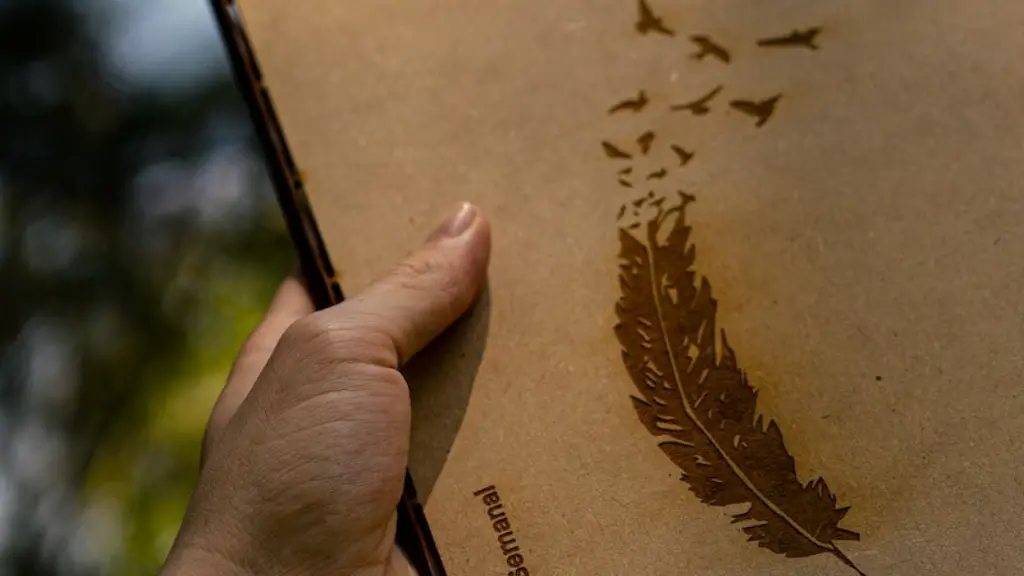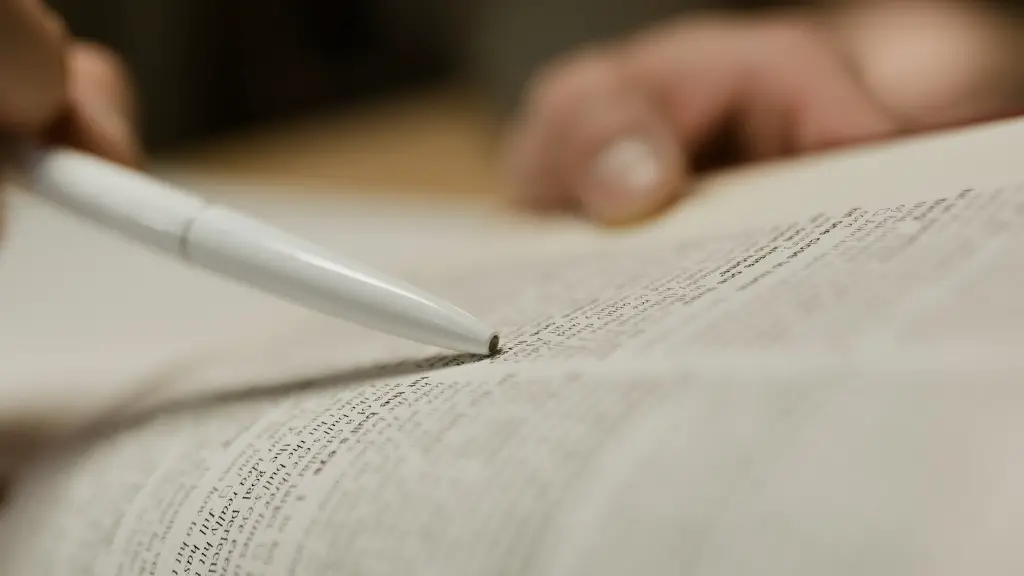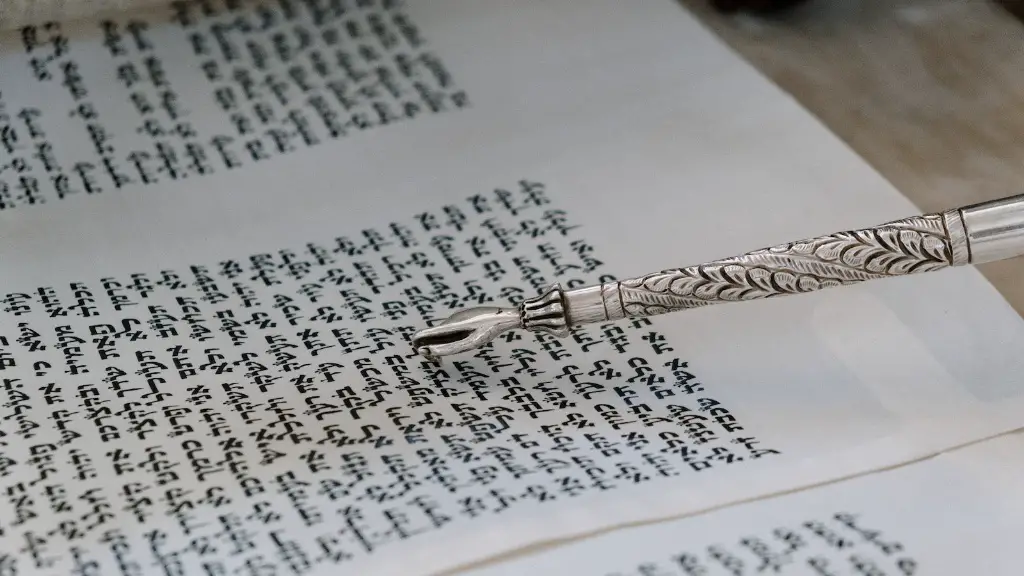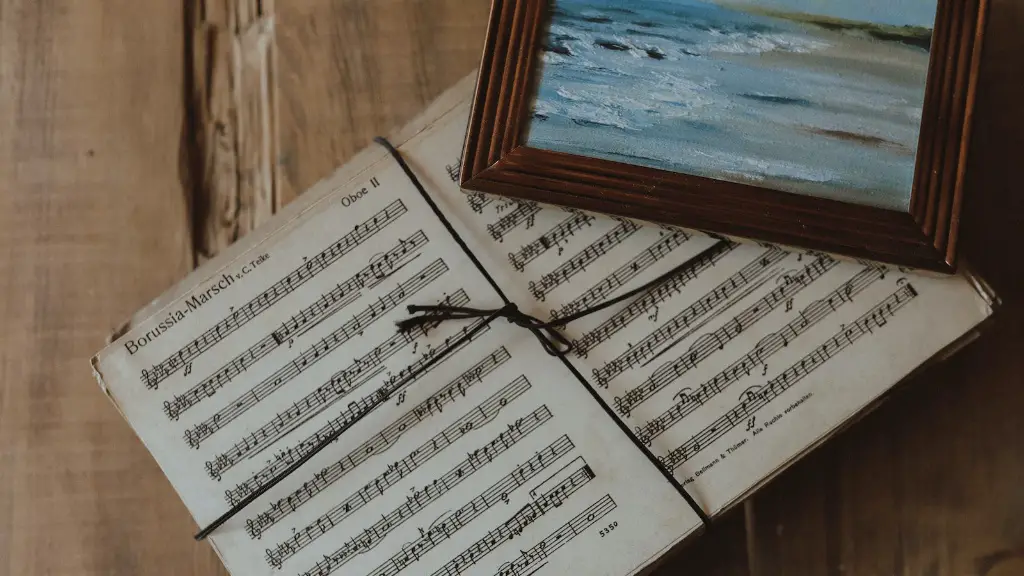What is Postmodern Poetry
Postmodern poetry is a type of poetry that emerged in the late 20th century during a time of upheaval in the traditional literary scene. It is characterized by a fusion of genres and themes, a decreased emphasis on narrative structure, a heightened element of chaos, and a disregard for traditional conventions. The form has gravitated away from linearity, traditional poetic meter, and objective description, and embraces a more open-ended style that is rooted in subjective expression. This style of writing pushes the boundaries of conventional poetry and is often filled with abstract imagery and obscure relationships, as well as paradoxical juxtapositions.
Postmodern poetry has its roots in the works of poets such as Allen Ginsberg and Anne Sexton who began to experiment with a more modernist approach in their writing. Influential writers from this era, such as Wallace Stevens and John Ashbery, continued to push the boundaries of the traditional poetry structure by creating work that had a greater emphasis on abstraction and obscurity. By the mid-1980s, postmodern poetry had become an established form, with writers such as Susan Howe, Eileen Myles, and John Yau experimenting with more experimental forms.
One of the defining features of postmodern poetry is its disregard for traditional poetic conventions. For example, postmodern poets often use language in an unexpected manner, playing with syntax to create juxtapositions and creating abstract imagery to explore themes. In addition, postmodern poets often dispense with traditional techniques such as meter, rhyme, and traditional forms of structure. This creates a sense of chaos and uncertainty, and lends the poets’ work an air of ambiguity and creativity.
Another aspect of postmodern poetry is its emphasis on individual interpretation. Postmodern poets often strive to create work that is open to a wide range of possible interpretations, inviting readers to explore their own interpretations and ideas. This allows for a greater degree of intellectual and emotional engagement on the part of the reader and encourages a greater sense of exploration on the part of the writer.
While many postmodern poets remain firmly within the realms of traditional poetic conventions, some have pushed the bounds of conventional writing even further. Writers such as John Cage and Kenneth Goldsmith have embraced a greater degree of experimentalism, pushing the boundaries of both the form and content of the work. By embracing a more open-ended approach to writing, these poets are creating a more evocative and thought-provoking form of poetry.
Role of Political and Social Change
Postmodernist poetry had its roots in a period of political and social change in the late 20th century. This period saw a shift in the traditional literary scene, with writers beginning to explore new ideas and perspectives. As a result, postmodern poets often sought to challenge existing conventions in the literary world, and to bring a new perspective to the literary world.
The emergence of postmodern poetry can be seen as a reaction to the constraints of the traditional literary scene. Postmodern poets sought to break down the walls of conformity and to embrace a more open-ended approach to writing. This allowed them to explore new ideas and themes, and to create work that was both thought-provoking and emotionally engaging.
Postmodern poets also sought to bring a greater degree of political awareness to their works. Writers such as Adrienne Rich and Muriel Rukeyser used postmodern techniques to explore social and political issues in their works. By doing so, they sought to bring a greater degree of awareness to the political and social issues of the day. This was especially true in the work of the poets associated with the Beat movement, who sought to challenge conventional norms and bring an element of social change to their works.
The role of political and social change in postmodern poetry is further evidenced in the works of writers such as June Jordan and Amiri Baraka. These writers sought to explore the complexities of politics and to challenge the status quo. By doing so, they created pieces that were able to capture the complexity of the times and to inspire greater levels of conversation and reflection on the part of the readers.
Role of Technology
The emergence of postmodern poetry was also in part due to the development of modern technology in the late 20th century. Writing tools such as the word processor, desktop publishing, and the internet allowed writers to break free from the traditional conventions of writing and to explore new ideas and perspectives. This was especially true of postmodern poets, who sought to explore the potential of technology in their works.
Writers such as Kenneth Goldsmith and John Cage embraced technology as a tool for exploration. By utilizing technology as a creative tool, these writers were able to create works that were both creative and thought-provoking. Goldsmith, for example, experimented with creating works of art from the output of computer programs. By doing so, he was able to create works of art that explored the potential of technology and its ability to create new perspectives.
Technology has also allowed postmodern poets to break down the walls of traditional poetic forms. Writers such as John Yau, Anne Carson, and Eileen Myles have embraced the potential of technology to create works that explore new forms of expression and to blur the lines between poetry and other forms of creative expression. By doing so, these poets create works that are both creative and engaging.
Joys of Postmodern Poetry
Postmodern poetry has allowed readers to experience the joys of creativity and exploration. By breaking down the walls of traditional poetry and exploring new forms of expression, postmodern poets have created works that are both intellectually stimulating and emotionally engaging. This has allowed readers to explore new ideas and perspectives and to appreciate the beauty of the written word.
Postmodern poetry has also allowed readers to explore a greater range of ideas and emotions. By embracing the open-ended nature of the form, postmodern poets have invited readers to explore their own interpretations and ideas. This has allowed readers to engage with the work on a deeper level and to gain a greater appreciation for the beauty and power of the written word.
Additionally, postmodern poetry has also allowed writers to explore deeper themes and ideas. Writers such as June Jordan and Adrienne Rich have used postmodern techniques to explore complex topics such as social and political issues. By doing so, they were able to create pieces that were both thought-provoking and emotionally engaging.
Finally, postmodern poetry has allowed writers to explore the boundaries between poetry, art, and music. Writers such as Kenneth Goldsmith and Eileen Myles have used the form to blur the line between these different forms of creative expression. By doing so, they have created works that are both innovative and engaging.
Examples of Postmodern Poetry
Examples of postmodern poetry include Wallace Stevens’ “The Emperor of Ice-Cream,” Susan Howe’s “Pierce-Arrow,” and Allen Ginsberg’s “Howl.” These works are showing the hallmarks of postmodern poetry and display the poet’s experimentation with form, narrative structure and poetic conventions. They also show the poet’s engagement with technological tools, such as juxtapositions and paradoxical imagery.
In addition, John Cage and Kenneth Goldsmith’s works are excellent examples of postmodern poetry. Their works explore the potential of technology as a creative tool and as a means of breaking down the boundaries between poetic forms. Through these works, they were able to create pieces that were both innovative and thought-provoking.
Finally, John Ashbery’s works, such as “Self-Portrait in a Convex Mirror,” are excellent examples of postmodern poetry. His works explore abstraction and evoke open-ended interpretations. By doing so, they create pieces that are both intellectually stimulating and emotionally engaging.
Style of Postmodern Poetry
Postmodern poetry is characterized by a fusion of genres and themes, and a heightened element of chaos and uncertainty. Writers often embrace a more open-ended style that is rooted in subjective expression and play with syntax to create juxtapositions and imagery. Additionally, writers often reject traditional poetic conventions and create work that calls into question traditional forms of structure and meaning.
The form also often dislodges entrenched notions of genre, blurring the line between poetry, art, and music. Additionally, writers often use technology as a tool for exploration and experimentation, allowing for greater levels of creativity and complexity. Finally, postmodern poetry also often incorporates political and social issues in its works, allowing for a greater degree of awareness and conversation.
Universal Nature of Postmodern Poetry
Postmodern poetry is not limited to a particular time or place, but can be found throughout the world. Writers have used postmodern techniques to explore a wide range of topics, from the personal to the political. This universality has allowed postmodern poetry to become a part of the cultural fabric of many different countries, and to encapsulate a wide range of emotions, ideas, and perspectives.
In addition, postmodern poetry has been embraced by writers from all walks of life. Writers such as Edward Hirsch and Sylvia Plath have used postmodern techniques to explore their craft and to create works that are both intellectually stimulating and emotionally engaging. Additionally, postmodern poets such as Amiri Baraka and Eileen Myles have used the form to explore critical societal issues and to bring a greater degree of awareness and conversation to the topics.
Finally, postmodern poetry has allowed for a greater degree of freedom of expression. Writers such as John Cage and Kenneth Goldsmith have embraced the potential of technology as a source of exploration and creativity. By doing so, they have allowed for a greater degree of exploration of the potential of language and the beauty of the written word.
Conclusion
Postmodern poetry is a type of writing that emerged in the late 20th century. It is characterized by a fusion of genres and themes, a decreased emphasis on narrative structure, and a disregard for traditional poetic conventions. It also often incorporates technology and explores critical societal issues. Finally, postmodern poetry has allowed for a greater degree of freedom of expression and exploration of the potential of language and the written word.





